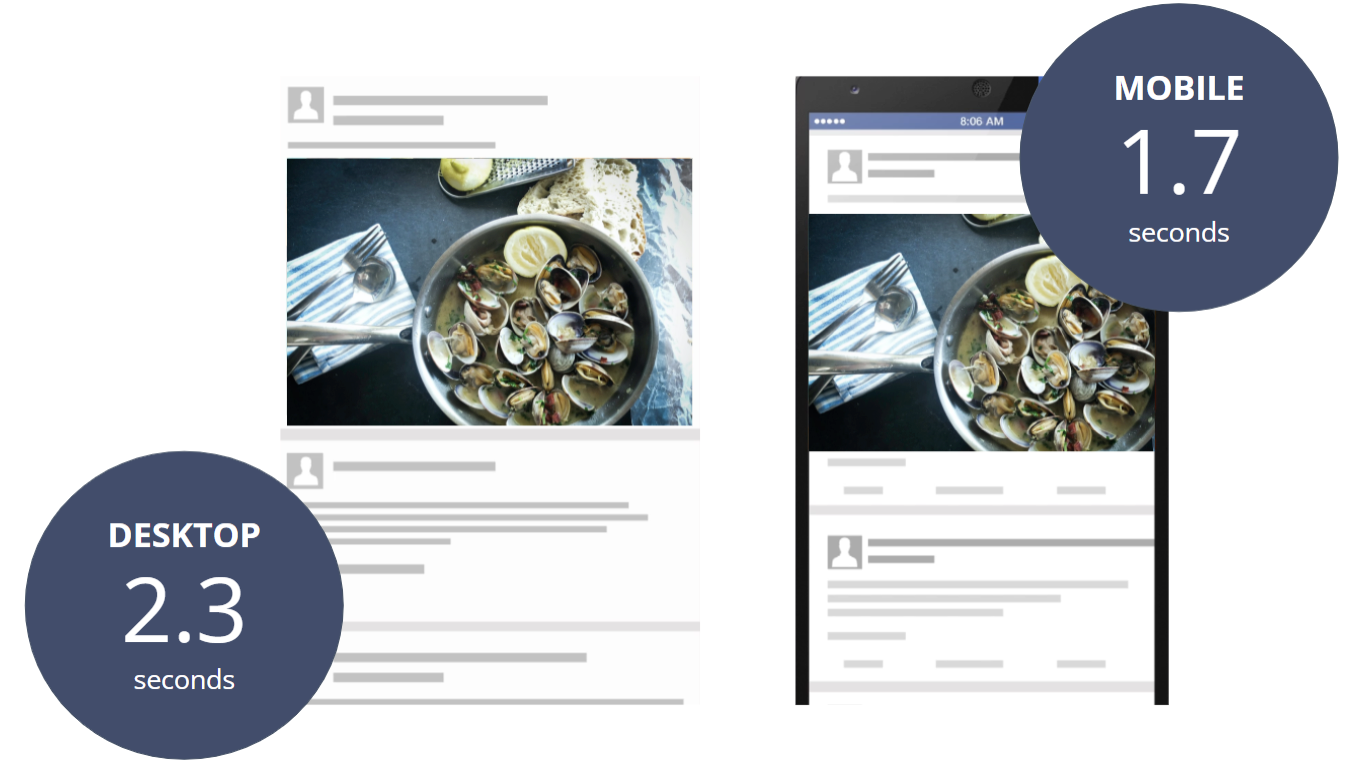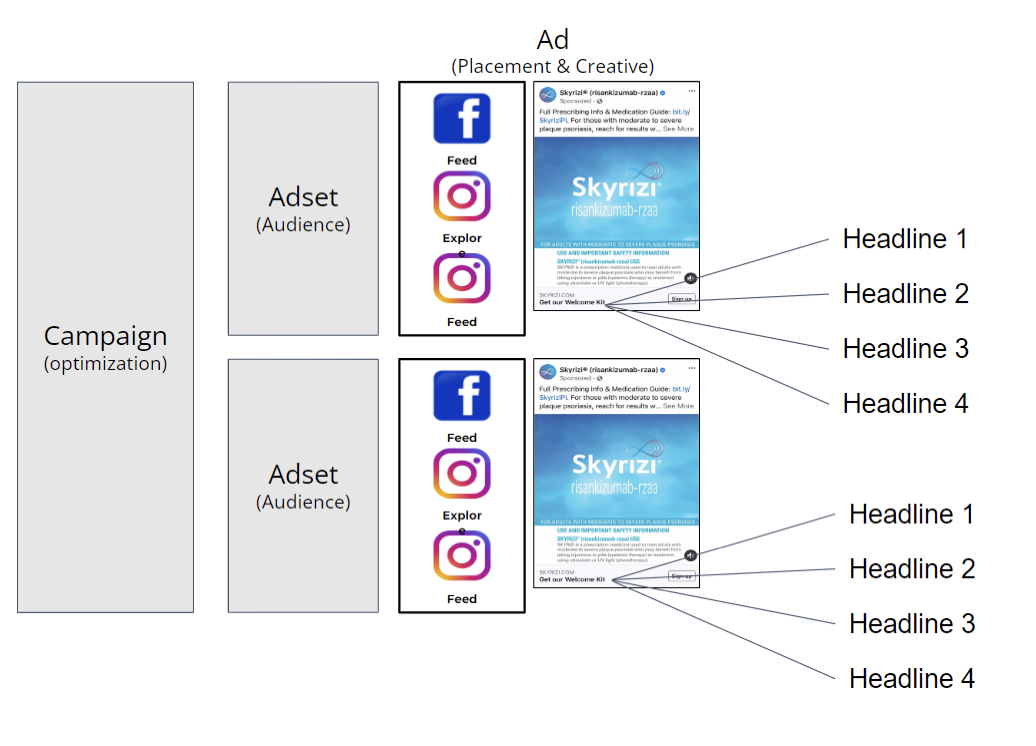The Value of Testing Ad Creative, Part 1

Testing ad creative is the process of learning what message rises above and motivates your target audience in a sea of ad noise.
When looking to deliver higher engagement for our own clients, creative testing is an essential element to informing and optimizing brand expression for action. Investing time into creative testing accelerates the learning curve, increases ad engagement and improves the return on media investment on digital platforms. This is how you learn what your target audience will respond to and what they won’t – in an unbiased real world setting. Testing can accelerate your digital learning curve, but it takes time. You may not get it right the first time, and that’s ok. It’s better to learn through testing than to be reacting if the business is struggling.
brand expression for action. Investing time into creative testing accelerates the learning curve, increases ad engagement and improves the return on media investment on digital platforms. This is how you learn what your target audience will respond to and what they won’t – in an unbiased real world setting. Testing can accelerate your digital learning curve, but it takes time. You may not get it right the first time, and that’s ok. It’s better to learn through testing than to be reacting if the business is struggling.
It is well known that advertisers are fighting to stand out and get noticed on social media. There’s so much content that advertisers have mere seconds to grab the attention of the user. Individuals scroll through their pages and feeds quickly. Time is of the essence for those distributing content and ads. Research has found that users give 2.3 seconds on a desktop and even less on a mobile device at 1.7 seconds for something to grab their attention. To compound the challenge, most digital platforms are optimized to push the most relevant ad content to users. This means the ads with less relevant information and content end up either costing more (CPM) or they are not being served at all. With such little time to secure engagement and the risk of losing visibility, it is crucial to make sure that your target audience is seeing the best ad creative.
The good news is that there are ways to start testing ad creative that are low effort, cost effective and improve performance in terms of reach and engagement.
What Can Be Done to Engage Your Audience?
Knowing that the time frame to engage the audience is so limited, you may ask what can I do to stop people from mindlessly scrolling past my ad? Well, there are some helpful hints that help you stop people’s thumbs. When looking at the creative itself, having an eye catching visual that promotes your key message holds the most user impact. Next, a user will look to see if they can identify the advertiser and determine if they are relevant to them. Additionally, focusing on the primary text (aka ad copy), headline, and call to action, will all have an impact on the relevancy of the ad and engagement that follows. Below there is an in depth explanation of each one of these components, best practices, and how advertisers can optimize these ad elements.
The simplest way to begin testing creative is by testing the primary text and headlines used in paid ads.
For Pharma advertisers, testing the headline is more important than testing the ad copy (primary text). Typically, only the Prescribing Information (PI) / Important Safety Information (ISI) is visible at the top of an ad and the ad copy is hidden.
Understanding which ad copy and headlines work best can provide essential insights to the development of future creative elements. This cost effective solution is a fast way to generate a performance lift and have a great return on investment. Understanding which headlines work best can provide essential insights to the development of future creative elements. Knowing what messages are resonating with the target audience when looking to build out visual or video assets with higher costs, or ones that require more effort, is a valuable insight. There is a major benefit in low cost and low effort headline testing, including a high number of headlines tested, and the acceleration of the learning curve. This allows for a vast amount of knowledge for future ad cycles. The example below features a Skyrizi Facebook ad from the team at Abbvie, Inc. The ad is well laid out and is a good example of the key elements of a paid social ad.
Ad creative (A):
While visuals and video are the first element viewed and the most impactful part of an ad, they are also the most expensive element of an ad. Investing in the ad creative and message testing is an investment well worth it. When setting up ads, the creative team usually has the longest lead time because of production time, so preparing in advance is an important step. Testing visual elements of an ad will be explored further in future blogs.
Advertiser (B):
Brand equity drives the opinion of consumers when they see an advertiser attached to an ad. Is the brand recognizable and a source that they want to consume information from? This is an aspect that is outside of ad creation and testing, yet it is still a factor in the decision consumers make when stopping for an ad.
Headline (C):
The ad headline is typically the impact statement in an ad. This is what tells the target audience, what the ad is about and why they should care. Headlines generally consist of 4-6 words and are the 3rd most viewed component of an ad. That makes the headline a very valuable element on the ad.
The headline acts as the supporting pillar to many aspects of the ad. It can support the visual elements, create interest in what is displayed in the primary text behind the ISI, and also helps to motivate users to take action. Headlines are becoming a very important aspect of ad creation. Finding a relevant, attention grabbing, and action motivating headline contributes to a well performing ad. With the growing importance of relevant headlines, headline testing is becoming an essential tool.
Primary Text (D):
The primary text or ad copy is typically the culmination of extensive advertising and consumer research. That said, it’s often developed in a bubble between the creative and marketing teams who are focused on getting the target audience to engage and take the desired action (oftentimes making a purchase). Testing the ad copy can help determine the tone, message and keywords that create the highest engagement with the target audience and motivate them to take the desired action.
When curating ad copy and primary text, pharma brands will have less control over what text accompanies the ad. Especially when considering the addition of ISI, that is required to be displayed first. Because of this, there is a large focus to test and discover the best use of headlines for these types of ads.
Call To Action (E):
Most digital advertising platforms offer options for a dedicated Call to Action (CTA) in the ad. This enables advertisers to direct consumers to take the desired action on the main message of the ad, such as Learn More, Sign Up, Register, Download, etc. There is no doubt that the call to action is important, however it is the last element viewed in the ad. There are two reasons for this: 1) the button is usually located in the bottom right of the ad which is the last place the eye is drawn and 2), the action step usually happens after the other elements of the ad have motivated the user to explore further.
The Benefits of Testing Ad Creative
While there are many intricacies to creating engaging ads, headline testing remains a fast, cost effective option to improve ad performance and generate key insights on what messages and keywords resonate with the target audience. 
A key element of headline testing is the ability to do so dynamically. Most platforms allow for multiple headlines to be added in the ad customizer and optimized dynamically to put the investment behind the highest performing headline.
Dynamic headline testing utilizes the customization and optimization capabilities of the ad platforms (like Meta’s Facebook). Done correctly, the ad platforms will optimize marketing investment behind the headline that is resonating and generating actions. It also provides the platform algorithms the insights needed to place the best headline alternatives to individuals in the target audience that may not engage with the original headline. Not only does this real time testing optimization process happen at the ad level, the ad platform is also optimizing the ad headlines across all eligible placements. Of course, ad platforms can do this dynamically and at scale which is far faster than any human marketer could achieve.
As previously mentioned, the ability to accelerate the learning curve is another great advantage of headline testing. Quickly identifying the messages that are resonating and driving actions, testing positioning language to emphasize differentiated value, evaluating nuances in campaign messaging, and testing new keywords in headlines are all great benefits of headline testing. Utilizing the full capabilities to test ad creative in paid social marketing tools allows for accelerated insights and learnings that help keep the audience engaged as well as keeping the brand team informed of changing preferences in the market.
Creative testing enables marketers to quickly identify both the highest performing headlines and optimize investment behind the highest performing message.
As we’ve pointed out, testing also has the ability to generate improvements in the Return on Media Investment. Having creative options and accelerated learnings enables the ad platforms to optimize investment behind the best performing copy. This can generate an immediate lift in performance. In addition, creative testing can also increase targeted reach or how many people can see (are exposed to) a particular ad. When the ad platforms have the ability to dynamically serve relevant content to someone in the targeted audience, ad engagement increases and the ad platforms open the ad up to a wider audience. All of which contributes to improvements and efficiencies in ad spend and optimizes the cost per impression served. These benefits are great ways to ensure ads are performing well and engaging an audience, but at what price and at ROI?
Accelerating Return on Marketing Investment
Headline testing presents a cost effective solution to generate insights and improve the return on marketing investment. As mentioned, headlines are usually 4-6 words which means the cost of writing the different headlines is oftentimes just a fraction of the cost of production of the visual and video elements of an ad. As marketers know, the video and visual elements can have high production value and costs, paired with long lead times, limiting the payback on investment. Conversely, there can be significant payback and cost efficiency from headline testing. All in all, creative testing works to generate a high return on investment. The value added of improved media performance, with accelerated learnings that come at a low cost are components that work to increase the ROI. 
There is a large opportunity for creative ad testing. Creative testing provides a live in- market approach to testing that generates results and many helpful insights. Optimizing the correct messaging to the correct target audience in real-time, paired with the copy that performs the best, is a great solution to increase engagement. Testing also allows for earlier identification of the need for messaging changes as well as providing valuable insights to creative teams. These insights can empower a creative team to make each generation of ad creative more impactful.
5 Steps to Start Creative Testing
For most brands and marketers, Facebook is the easiest place to start. Meta’s ad manager platform offers robust ad customization and budget optimization capabilities. As well as a large audience for testing new ad creative.
- Identify several ads that fall under the same campaign creative umbrella
- Work with the copy team to develop 3 – 4 additional ad headlines and 3 – 4 additional versions of the ad copy that can be tested.
- Use this Pro Tip: Good options can come from market research, top performing PPC keywords, search queries or social listening.
- Utilize the placement customizer to insert the content variations when new ads are set-up.
- Turn on budget optimization when setting-up the ads to allow the platform to optimize the spend across the best performing creative options.
Enjoy this post? Be sure to check back or follow us on social, in part 2 and 3 of the creative testing series we will dig deeper into testing visual assets and ad testing. This will include true a/b testing, champ v. challenger and multivariate testing.
For more information, check out these resources:
Meta’s creative testing best practices
TikToks Always On Creative Testing Guide
About Digital Amplification
The Digital Amplification agency team works with clients to leverage ad creative testing and other data informed marketing and media optimization techniques to increase engagement with the target audience. These data informed approaches enable our clients to optimize performance and maximize the value of their investment. The agency team at Digital Amplification will continue to share Digital Amplification techniques, like the ones shared here, to showcase opportunities that amplify the impact of marketing efforts.